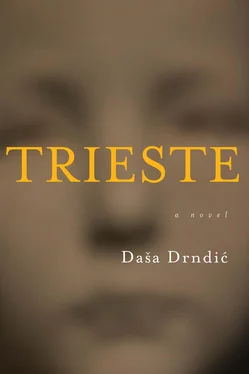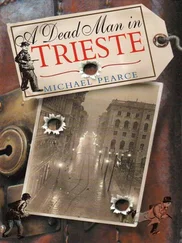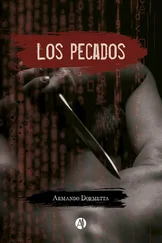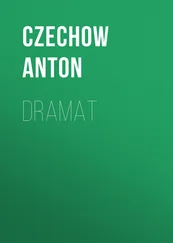So, in 1976 Haya makes a little file, utterly pointless. She writes out notes, arranges them, rearranges them, as if shuffling a pack of cards. I could play solitaire with these notes, she says, which, in a sense, she does. This dog-eared file, full of cracked photographs of people, most of whom no longer exist, becomes Haya’s obsession; over the year she supplements her collection, slips into it little oddities, terse news items which after two, three, four decades she digs out and peruses, as if grabbing at dry dandelion fluff, as if catching eiderdown in a warm wind. Pointless, pointless. Forgotten dossiers, sealed archives open slowly, slowly, and what emerges is no more than water dripping from cracked sewage pipes. During the Trieste trial in 1976 only two “big fish” remain: Josef Oberhauser, *brewer in Munich, former San Sabba commander and — from 1941 to the end of the war — Dr Dietrich Allers, a high-ranking official, one of the executive directors of the T4 programme, a lawyer and S.S.-Obersturmbannführer (approximately a colonel). But Allers dies a year before the trial, in 1975. Born in 1910 in Hamburg, Allers works as an attorney until 1968, when he is sentenced to eight years in prison, which he does not serve out. So all the fuss, all the pursuit of justice — for nothing. The Italian judiciary does not call for Oberhauser’s extradition, because according to the agreements in force at the time between Italy and Germany, only those suspected of crimes committed after 1948 may be extradited. The trial goes on literally in a void: no defendants sit in the courtroom, the judges natter on, journalists snap their cameras — at no-one. In a solemn voice the judgement is read out to unschooled farmer Josef Oberhauser, but Josef Oberhauser is nowhere to be seen, so to whom is the judgement read? Oberhauser is sentenced in Trieste to life imprisonment, yet in Munich he goes on selling beer, especially during the Oktoberfest, when he is in particularly fine fettle. Three years later, in 1979, fat Oberhauser dies of a heart attack.
There is one dossier Haya never gets around to closing. One name she skips over. Thirty years have passed. The name, printed next to the number eight on the newspaper clipping, looks wholly innocent, a cluster of letters arranged in two short words: Kurt Franz. Kurt Franz. Letters that elude harmony; letters that zing in staccato out of their context and slam into Haya’s temples like bullets. Kurt Franz watches Haya, Haya watches Kurt Franz, and then, in 1976, under him, under her, all around, gapes a chasm into which Haya strides, into the forecourt of Hades.
Who is Kurt Franz?
Kurt Franz cannot be put into Haya’s archive. His story doesn’t end in 1976. Kurt Franz’s story doesn’t even end with his death, furthermore with Kurt Franz’s death the story of Kurt Franz, the story about Kurt Franz, spreads, flows into waiting, into Haya’s wait, today’s, into our wait.
It was late summer or the beginning of autumn 1942 when I came from Belzec to Treblinka. It was night… Everywhere in the camp there were corpses. Bloated corpses. The corpses were dragged through the camp by working Jews, and these working Jews were driven by the Ukrainian guardsmen and also by Germans… I reported to Wirth in the dining room. Stangl and Oberhauser were with him…
Kurt Franz, S.S.-Untersturmführer, was born on 17 January, 1914, in Düsseldorf. A cook. Trained at Restaurant Hirschquelle, then at Hotel Wittelsbacher Hof, but does not pass his final examination. Serves in the army from 1935–37. Joins the Waffen-S.S., given number 319,906. Begins his career in late 1939 as a cook at the Grafeneck euthanasia centre, and later, when the job at Grafeneck is done, Kurt Franz moves to Hartheim, then to Sonnenstein, and then to Brandenburg, and he cooks less and advances more.
Grafeneck is a medieval castle located in the state of Württemberg on a hill overlooking the town of Marbach, where Schiller was born, so there is a Schiller Museum in Marbach and a rich literary archive. The air is fresh at Grafeneck; the nights are chilly. In the early 1930s a samaritan organization turns the castle into an institution for the mentally handicapped. Then S.S. men come in the late 1930s, members of Aktion T4 arrive, headed by Viktor Brack, to have a look at the castle, to see whether it suits them; the natural surroundings are beautiful, and the software is already there. So the S.S. elite requisition the castle with all the patients and throw themselves into work. The castle is adapted for the personnel. A small settlement of barracks goes up nearby. The barracks are surrounded by a four-metre wall. The patients sleep in the barracks and are killed in the barracks by S.S. men. The S.S. men are playing. Experimenting. At one of the barracks S.S. personnel install two mobile crematorium ovens, which dangerously heat the roof, so they remove the roof, and into the sky goes the smoke, turning nature black, the trees, grass, flowers, the sky — everything is black. Even when the sun shines the environs are black. Even the birds are black. This primitive gas chamber (gas chambers will be perfected later), this barrack, has a capacity of seventy-five people per session. The entire castle is surrounded by barbed wire and guards. And dogs. Expert personnel work at Grafeneck, twenty-five female and male nurses, Dr Horst Schumann is there with his colleagues, and Christian Wirth becomes head of administration.
In January 1940 Dr Horst Schumann, S.S.-Sturmbannführer (major), runs the Grafeneck euthanasia “institute”. Once the work is up and running, Dr Horst Schumann transfers to Sonnenstein “institute” in Saxony, in order to start up a new euthanasia programme. Schumann is, otherwise, a member of a medical commission, the task of which is to dispatch ailing camp inmates from Auschwitz, Buchenwald, Dachau, Flossenburg, Gross-Rosen, Mauthausen, Neuengamme and Niederhangen to the euthanasia centres which are beginning to flourish all over the Reich.
Dr Schumann arrives at Auschwitz in June 1941 and selects 575 prisoners whom he sends to Sonnenstein where the guards inject them straight into the heart with super-toxic phenol. Schumann returns to Auschwitz to try out a “cheap and effective” method of mass sterilization of women and men using X-rays. Hardly any of his guinea pigs survive. They die of internal haemorrhaging, of burns. They die after additional “operations”, meaning the removal of ovaries and testicles. They die of exhaustion and shock. At Auschwitz, and maybe later as well, Schumann examines the efficiency of devices he never patents — ah, events follow one upon another with such speed, devices that serve for the experimental harvesting of sperm, a small rectal insertion to stimulate the prostate and ejaculation. Dr Schumann leaves Auschwitz in 1944. A Dr Schumann, such a nice name, shows up in October 1945 in Gladeck, a small industrial town in the Ruhr region, where the local authorities employ him as a sports doctor. Somewhat later, Dr Schumann opens a private practice that prospers for him until 1951, until someone — Lord, such a classic! — someone identifies him as a war criminal. Dr Horst Schumann vanishes, of course. He works for three years as a doctor on a transatlantic ocean liner, then travels to the Sudan and is joined there by his wife and three innocent, golden-haired children. Four years later the happy family hurry through Nigeria and Libya to Ghana. In fact, Dr Schumann does end up in prison around 1966 after President Kwame Nkrumah dies. Nkrumah thinks highly of Schumann for all he does for the people of Ghana, because this tall, well-built man with elegant hands and long artistic fingers, this man who is nearly a saint, living in a damp Ghanaian province where malaria rages, the rains never cease, the tropical heat steals the breath, the poverty is immense, this humanist, in his (Nkrumah’s) African backwoods builds a hospital with forty beds and lives there with his family in a modest bungalow, three day’s trek from the nearest town, because the roads are so ghastly and no white men anywhere, and if someone, a white-skinned visitor, happens to stumble across him, Dr Schumann brings the guest to the humble clinic and shows him the charters from the World Health Organization hanging there, clearly visible, reads them to the visitor so that the visitor remembers that it is the duty of every doctor to furnish mankind with the best possible conditions for a healthy and happy life.
Читать дальше












